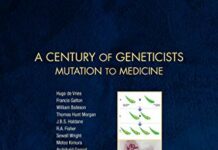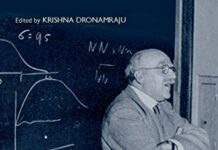
Ebook Info
- Published: 2011
- Number of pages: 296 pages
- Format: PDF
- File Size: 6.19 MB
- Authors: Krishna Dronamraju
Description
Haldane, Mayr, and Beanbag Genetics presents a summary of the classic exchange between two great biologists – J.B.S. Haldane and Ernst Mayr – regarding the value of the contributions of the mathematical school represented by J.B.S. Haldane, R.A. Fisher and S. Wright to the theory of evolution. Their pioneering contributions from 1918 to the 1960s dominated and shaped the field of population genetics, unique in the annals of science. In 1959, Mayr questioned what he regarded as the beanbag genetic approach of these pioneers to evolutionary theory, “an input or output of genes, as the adding of certain beans to a beanbag and the withdrawing of others.” In 1964, Mayr’s contention was refuted by Haldane in a remarkably witty, vigorous and pungent essay, “A defense of beanbag genetics” which compared the mathematical theory to a scaffolding within which a reasonably secure theory expressible in words may be built up. Correspondence between Haldane and Mayr is included.Beanbag genetics has come a long way since 1964. Mayr’s (1959) critique of simple uncomplicated population genetics is no longer valid. Population genetics today includes much more than Mayr’s beanbag genetics. Population genetics models now include multiple factors, linkage, dominance and epistasis. These may be regarded as the advanced beanbag models. Furthermore, population genetics and developmental genetics have become interdependent. Contemporary beanbag genetics includes molecular clocks, nucleotide diversity, coalescence and DNA-based phylogenetic trees, along with the four major holdovers from classical genetics, mutation, selection, migration and random drift. Molecular genetics has made it possible to study evolution rates at the nucleotide level. It is also possible today to compare DNA similarities and divergence in diverse species of animals and plants, which were not previously crossable.
User’s Reviews
Reviews from Amazon users which were colected at the time this book was published on the website:
⭐This book has legitimacy problems. A 45-page article with the title “J. B. S. Haldane, Ernst Mayr and the Beanbag Genetics Dispute” appeared in The Journal of the History of Biology, the premier scholarly publication in this field, in March 2010 and was available online for nearly a year before the publication of this volume, which bears a virtually identical title. The authors were Dr. Veena Rao, a historian of science and Dr. Vidyanand Nanjundiah, a scientist who has worked on both evolutionary and developmental biological questions. The article was based on more than seven years’ research by Dr. Rao on the same primary sources referred to by Dr. Dronamraju. The J. Hist. Biol. article is not cited among the book’s more than 200 references.The book under review is listed as 296 pages in length, but much of this is taken up with facsimiles of Haldane’s and Mayr’s letters, timelines and biographical vignettes of the two principals, and capsule summaries of various issues in 20th century evolutionary biology available in earlier works by the same author and by others. The actual treatment of the issues in the “beanbag genetics” dispute (a debate on the relevance of analyzing individual genes, or genetic variants, as elements in the theory of evolution), is probably not much longer than that in the Rao and Nanjundiah article.Although Dr. Dronamraju knew both Haldane and Mayr (he was a doctoral student of the former) and thus has personal observations to share and a broad understanding of the scientific and historical issues, his presentation lacks the coherence of Rao’s and Nanjundiah’s focused analysis. The ultimate resolution of the beanbag genetics dispute appears to be emerging from insights from the field of evolutionary developmental biology, many of which (including the possibility that there are determinants of phenotype other than genes), were not on the horizon when Haldane and Mayr were writing. This point comes through clearly in Rao and Najundiah’s article. Dronamraju also mentions evolutionary developmental biology, but writes as if the dispute amounted, then and now, to the question of whether and when genes can be considered in isolation or must be considered in interaction with each other.During the course of the article’s preparation, Dr. Rao presented her main conclusions at several university seminars and scientific meetings, including a symposium held in memory of J. Maynard Smith and Ernst Mayr at the Indian Institute of Science, Bangalore, India, in 2005, the Yukawa centenary symposium in Kyoto, Japan in October 2007 (an abstract of which was put on the Web), and a meeting on phenotypic and developmental plasticity In Trivandrum, India, in December 2007 (at which this reviewer was in attendance). If Dr. Dronamraju did his homework, he benefited from Dr. Rao’s research and the insights of the two authors in their 2010 article, however unacknowledged. This would be an unfortunate reflection on his professionalism. If he was indeed unaware of the earlier article, it detracts from the credibility of his scholarship. Oxford University Press, which is expected to retain experts in the field as reviewers of book manuscripts, also bears responsibility for this publication slip up.
⭐As a reader interested in the history of science, I found the following quote by Elof Axel Carlson, Distinguished Teaching Professor, Emeritus, Department of Biochemistry and Cell Biology, Stony Brook University, New York, to accurately describe a book well worth reading by both academicians and the general public:”This interplay of ideas about ‘beanbag genetics’ between J.B.S. Haldane and Ernst Mayr is both rewarding and stimulating. It reminds us of how ideas change as new fields emerge and how debates need not lead toenmities but actually benefit the minds of two friends who agree to disagree. Historians of science, geneticists, evolutionary biologists, and those who enjoy reading about the way ideas evolve will find hours of pleasure reading Dronamraju’s analysis and presentation of their lives and work.”As one interested in the history of science ideas, I have enjoyed reading this book and would recommend it to others. I especially enjoyed reading the correspondence between Haldane and Mayr, a unique feature which was never published before.
⭐I find myself very perturbed that this book, which closely follows the previously published excellent and comprehensive paper by Rao and Nanjundiah in the Journal of the History of Biology, makes no mention of the prior work at all. Surely the author and the Oxford University Press must have been aware of the previous study which bears almost the same title and content. What is one to think?
Keywords
Free Download Haldane, Mayr, and Beanbag Genetics 1st Edition in PDF format
Haldane, Mayr, and Beanbag Genetics 1st Edition PDF Free Download
Download Haldane, Mayr, and Beanbag Genetics 1st Edition 2011 PDF Free
Haldane, Mayr, and Beanbag Genetics 1st Edition 2011 PDF Free Download
Download Haldane, Mayr, and Beanbag Genetics 1st Edition PDF
Free Download Ebook Haldane, Mayr, and Beanbag Genetics 1st Edition

